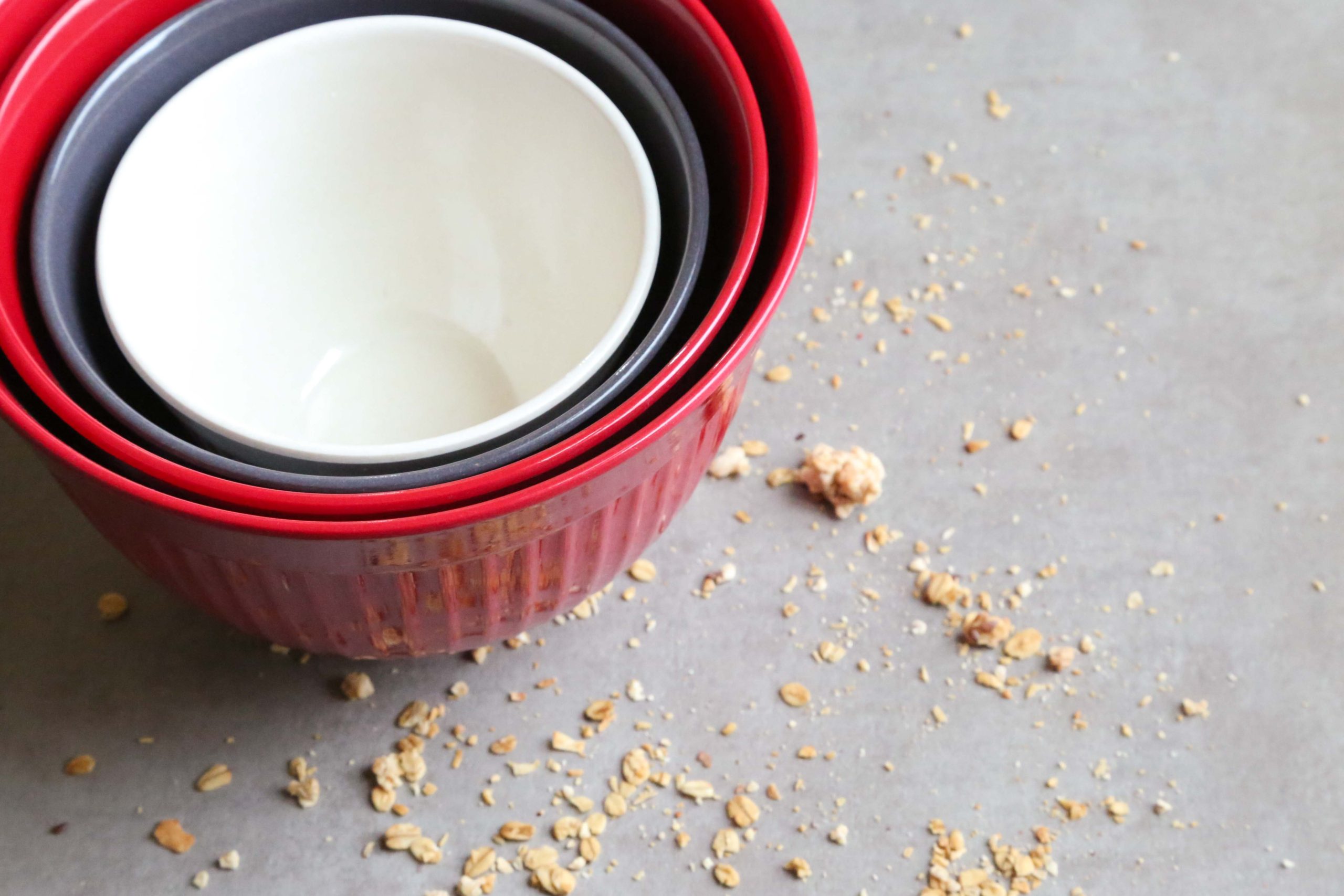
19 Sep How to Choose Mixing Bowls
Build a Dream Collection of Mixing Bowls
Mixing Bowls. Two simple words and yet the amount of variety that comes into play here reaches epic proportions. And I’m not just talking about size and material. From the slope of the sides and height of the bowl, to the size of the base and width of the lip, each and every factor plays a role in giving you the most comfortable and efficient mix.
There are so many factors to consider that I could probably write an entire dissertation on mixing bowls, but who’s got time for that? I want to focus on what’s important for you as you start to build an arsenal of baking supplies. This is about where to start and how to build out in the future. The three specs we’re going to look at are Quantity, Size, and Material.
How many bowls do you really need?
We’re talking about necessity. You’ve never baked before, your kitchen is completely bare, and you need to know the best way to bake a cake – right? The absolute bare minimum is two bowls. You absolutely CANNOT get away with just one because at the bare minimum you need one for wet ingredients and one for dry ingredients.
But honestly two is not enough either. In every bake from my first wonky coffee cake to my fondant covered, 3 tiered dedication to my nephew’s birthday, I needed – yes needed – 3 bowls to ensure a smooth and mess free (meaning stress free) process.
So 3 bowls, got it. But how big do they need to be? Should they all be the same size?
Best Bowls for Baking the Basics
- A large bowl for your main mixing bowl. Whether you’re adding dry ingredients to wet ingredients (like in the creaming method), or wet ingredients to dry ingredients (like with quickbreads) you want to make sure you’re always ending up with everything in the biggest bowl at the end.
- A medium or large bowl for half your ingredients. You can definitely have 2 bowls be the same size but most often you’re going to buy a set so this would be your second largest bowl. Make sure it’s large enough to hold at least 3-4 cups of flour (with plenty of space to mix and move around without overflowing) to account for larger recipes like sheet cake, layered cake, or a whole bunch of muffins for your office or your kids’ bake sale.
- A third bowl to help when measuring and sifting ingredients. It’s also just a handy side bowl in case you need the extra space throughout the baking process. I use it to melt butter, as a catcher for spooning out flour for measurements, and as the catch all for my eggshells when I’m too far from the garbage and my hands are gross.
I’d recommend finding a 3-Piece mixing bowl set to make your life (and your storage options) easier. These sets often include a 1.5 QT, a 3 QT, and a 5 QT bowl which would be perfect to get you started!
Now keep in mind – I’m only talking about mixing bowls here. When it comes to small nesting bowls I’m a firm believer you should have as many as your kitchen will hold. Seriously though there’s a reason that all ingredients are pre-measured on a cooking show – there’s no stress about time and mis-measurements once you’ve started. Since baking is often time-sensitive this will help things run nice and smooth, keep your stress low, and your confidence high!
Okay great! So 3 mixing bowls that stack together to make a perfect set. Like Goldilocks and her three bears.
The Best Material for Your Mixing Bowls
You’ll see 4 options in most searches for mixing bowls – plastic, ceramic, stainless/copper, or glass. Take it from me (and just about every other resource out there) you don’t want ceramic or plastic bowls for your essential set. Having a pretty ceramic bowl for serving large salads is beautiful, but when you’re trying to turn that bowl upside down to pour out batter you’re going to thank me. And while plastic is light weight, the material is too porous and you can end up contaminating your recipes with extra fat from oils that have absorbed into the sides. Buh-bye, no thank you.
So now the important question, stainless or glass? Honestly I think it’s generally about personal preference but here are the important details to consider.
Glass Bowls
Pros
- Nice and sturdy, they hold-their-own on the counter for mixing heavy batter.
- Dishwasher safe so clean-up is easy.
- Microwave safe makes glass super versatile, you can even create a make-shift double-boiler
- In a pinch you can use a glass bowl for serving
Cons
- While most glass mixing bowls are made of tempered glass, like those from Pyrex, there is certainly some risk of breaks and chips.
- They’re heavy. I’ve been using glass mixing bowls here at my family home during quarantine and they definitely create a challenge when I’m incorporating dry ingredients into wet ingredients.
Stainless Steel Bowls
Pros
- Lightweight and easy to maneuver, so pouring batter with one hand and spooning from the other is a breeze.
- Super easy to clean, just make sure to buy a dishwasher-safe style.
Cons
- NOT Microwave safe. You’ll need to find a substitute when melting butter or chocolate.
- They’re not especially pretty. Serving in a stainless steel bowl works if you’re a self-described modern-minimalist but most bakers (yup that’s us!) prefer something with a bit more aesthetic appeal.
Ok, so nothing is perfect but glass and stainless steel both have their perks, so how do you choose?
The Dream Mixing Bowl Collection
After all the research I’ve decided that 4 bowls is the magic number for anyone who wants a kitchen ready to tackle the wide world of baking. 1 large stainless steel bowl approx 5-6 QT PLUS a 3-piece set of glass bowls ranging from 1.5 QT – 5 QT. This combination gives you the benefits of the stainless steel bowl for mixing and moving ingredients around while still ensuring that you’ve got all the glass bowls you need since they’re way more versatile.
*Side Note: If you’re ready to dive in a want to fully flush out your set, the best bakers recommend a small copper bowl for whipping egg whites. The copper stays cooler and the eggs react with the metal in a specific way that speeds this process along.

